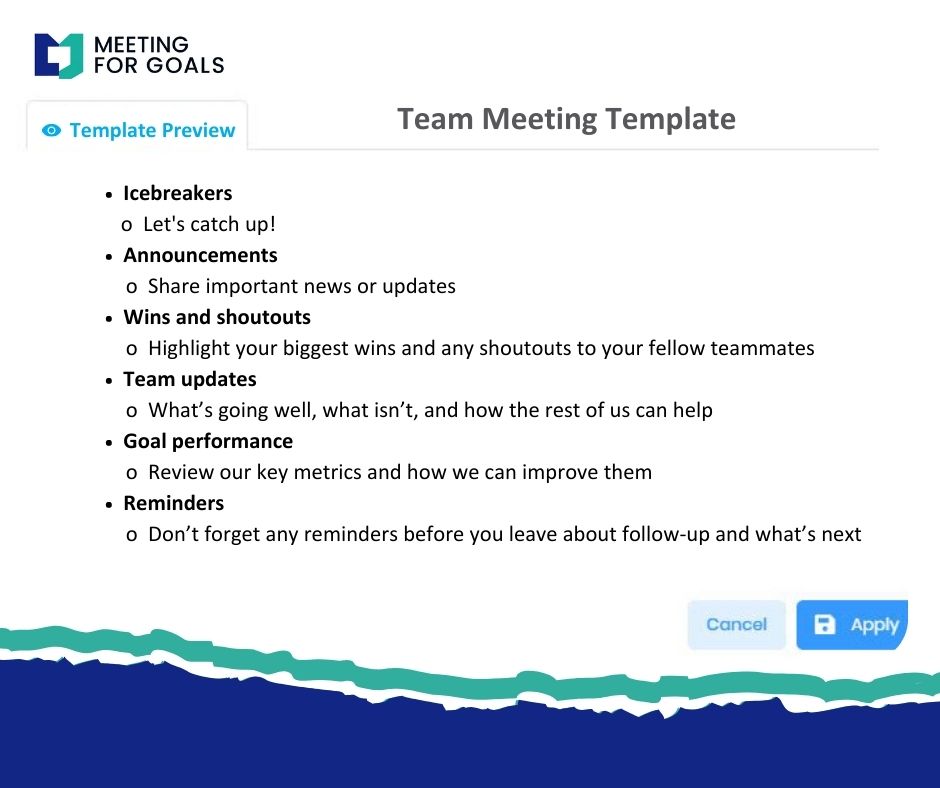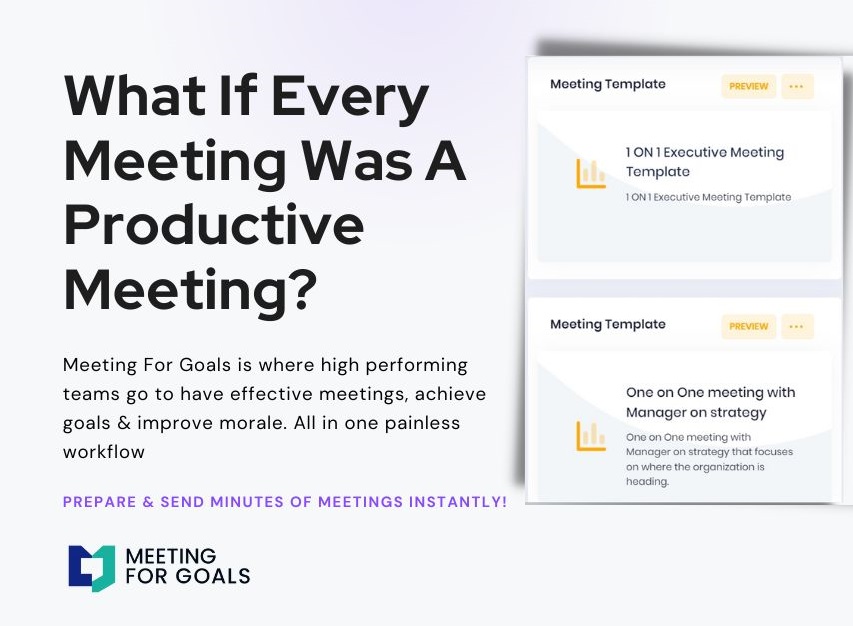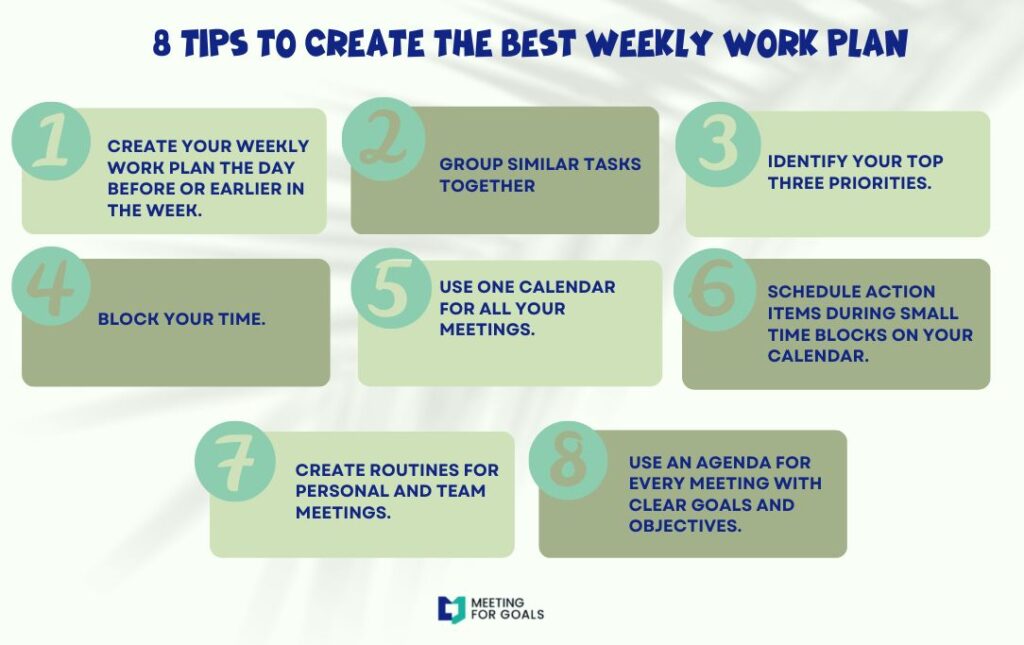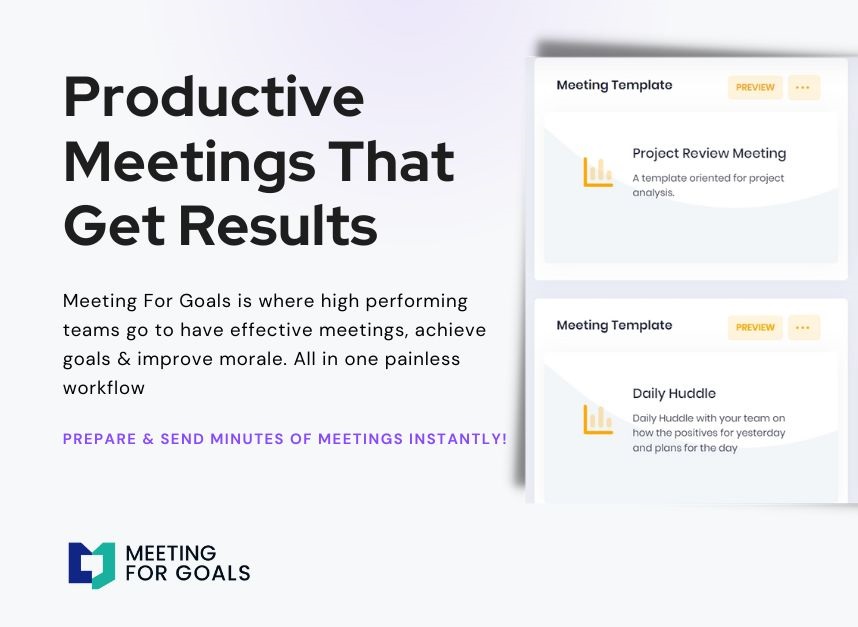The Role of a Skip Manager in Enhancing Meeting Efficiency
In today’s fast-paced business world, unproductive meetings are more than just a nuisance. They’re a serious drain on time and resources. For mid-sized companies with 40–70 employees, making every meeting count is essential. That’s where a Skip Manager comes in. This strategic leadership role helps bridge communication gaps, keeps teams aligned with company goals, and eliminates time-wasting habits.
In this article, we’ll explore how Skip Managers can transform your meeting culture, boost accountability, and elevate team performance. Whether you’re a VP, Director, or C-suite leader, understanding the power of a Skip Manager could be your next step toward operational excellence.
Start improving your meetings today with our free meeting templates or sign up now to Meeting For Goals to empower your Skip Managers with the tools they need.
I. Introduction
Let’s face it—most meetings aren’t great. They run long, go off-topic, and often leave people wondering why they were even invited. While meetings are supposed to drive collaboration and decision-making, they too often end up being productivity killers. This is especially true in mid-sized companies, where growing teams and multiple management layers can make communication messy.
That’s where the Skip Manager steps in. A Skip Manager is a senior leader who oversees multiple teams by “skipping” a layer of direct management. Instead of getting bogged down in day-to-day tasks, they:
- Focus on aligning strategy with execution.
- Ensure that meetings and team efforts drive real business outcomes.
And let’s not forget the role technology plays. Meeting For Goals, our meeting management software, is built specifically for high-performing teams. It helps:
- Align meetings with company objectives.
- Assign responsibilities.
- Track progress—all in one place.
If you’re looking to make meetings more productive and purpose-driven, understanding the Skip Manager’s role is a great place to start.
2 Minute Video
Watch a 2 minute demo of our meeting management software in action
II. Understanding the Role of a Skip Manager
The Skip Manager isn’t your typical team leader. They don’t manage individual contributors directly. Instead, they oversee several teams by working closely with middle managers. This gives them a unique vantage point. It allows them to see the big picture and ensure everyone is moving in the same direction.
Key Responsibilities of a Skip Manager:
- Bridging Communication Gaps: Skip Managers ensure that top-level strategies are clearly communicated to the teams executing them. They also relay feedback from the front lines back to leadership, creating a two-way flow of information.
- Aligning Teams with Strategic Goals: They help teams prioritize initiatives that matter most. By keeping everyone focused on what really drives the business, they reduce wasted effort and increase impact.
- Supporting Cross-Functional Collaboration: Many business goals require collaboration across departments. Skip Managers make sure these efforts are coordinated and effective.
How They Differ from Traditional Managers:
- Strategic vs. Tactical Focus: While traditional managers focus on daily tasks, Skip Managers look at long-term goals and cross-functional alignment.
- Influence Without Micromanaging: They guide and support middle managers instead of managing every detail. This empowers teams while keeping them aligned with company objectives.
In a mid-sized company, this role is a game-changer. It brings clarity, structure, and alignment to an organization that’s growing fast but still nimble enough to adopt new ways of working. To see how tools can support this role, check out Meeting For Goals. It’s designed to help Skip Managers track meeting outcomes, ensure alignment, and drive accountability across teams.
Adding an Agenda
How to add an agenda instantly on Meeting For Goals
III. Avoiding Meeting Pitfalls
Let’s be honest—most of us have sat through meetings that felt like a waste of time. They’re too long, lack focus, and often don’t lead to any real action. That’s a big problem, especially for busy teams trying to stay productive.
Common Meeting Challenges:
- No Clear Purpose: When meetings don’t have a defined goal, conversations wander. People leave confused about what was discussed and what needs to happen next.
- Off-Track Discussions: Without someone steering the conversation, meetings can easily go off-topic. This wastes time and frustrates attendees.
- Lack of Follow-Through: Even productive meetings can fall flat if there’s no system for tracking action items or following up.
How Skip Managers Help Fix These Issues:
- Creating Focused Agendas: Skip Managers work with team leads to create agendas that are goal-oriented. This keeps meetings on track and ensures that every discussion supports business objectives.
- Setting Meeting Standards: They help establish best practices across teams. This includes starting on time, sticking to the agenda, and ending with clear action items.
- Using Technology to Stay Organized: With Meeting For Goals, Skip Managers can standardize meeting templates, assign tasks, and track progress—all from one platform. This ensures consistency and accountability.
Want to avoid common meeting pitfalls? Try one of our free meeting templates to get started. By addressing these common issues, Skip Managers turn meetings into productive, goal-driven sessions that move the business forward.
IV. Enhancing Accountability and Responsibility
Accountability is what turns a good meeting into real-world results. Without it, even the most well-planned meetings can become just talk.
Why Accountability Matters:
When people leave a meeting without knowing exactly what they’re responsible for, things fall through the cracks. This leads to:
- Missed deadlines.
- Stalled projects.
- Dipped morale.
What Skip Managers Do:
- Encourage Ownership: Skip Managers work with middle managers to assign tasks with clear deadlines. This ensures everyone leaves the meeting knowing what they need to do and by when.
- Implement Follow-Up Systems: They don’t just assign tasks. They also make sure there’s a system in place to check on progress. Tools like Meeting For Goals make it easy to track action items, send reminders, and hold people accountable.
- Foster a Feedback Culture: Skip Managers facilitate regular check-ins and reviews. This helps teams learn from what’s working—and what’s not—so they can keep improving.
According to a study by Harvard Business Review, teams with strong accountability frameworks are 76% more effective at achieving their goals. That’s a powerful reason to embed accountability into your meeting culture. Meeting For Goals supports this effort with built-in follow-up tools that make it easy to monitor progress and keep teams on track.
V. Aligning Meetings with Company Goals
Here’s a question: How many of your meetings actually help move the company forward? If your answer is “not many,” you’re not alone. Many meetings are disconnected from strategic goals. They’re focused on updates or minor issues instead of the big picture.
Why Alignment Matters:
When meetings are tied to company goals, teams understand why their work matters. This boosts:
- Motivation.
- Improves decision-making.
- Ensures resources are being used wisely.
How Skip Managers Drive Alignment:
- Use Goal-Tracking Tools: Software like Meeting For Goals lets you integrate company objectives directly into your meeting agendas. Teams can see how their work ties into broader goals, which keeps everyone focused and aligned.
- Review Meeting Relevance: Skip Managers regularly evaluate whether meeting topics are still aligned with current priorities. If something isn’t adding value, it gets cut.
- Promote Cross-Team Collaboration: Strategic goals often require teamwork across departments. Skip Managers ensure these meetings are productive and focused on shared outcomes.
Want to make sure your meetings are goal-driven? Sign up for Meeting For Goals today and start aligning your team’s efforts with what really matters. By embedding strategic alignment into every meeting, Skip Managers help teams stay focused and motivated. They turn meetings into a tool for execution, not just discussion.
VI. Real-World Success: Skip Managers in Action
Let’s look at how Skip Managers are making a difference in real companies.
Case Study: Tech Startup with 60 Employees
Before hiring a Skip Manager, this company struggled with misaligned priorities and bloated meetings. After introducing the role and implementing Meeting For Goals, they saw:
- A 40% reduction in meeting time.
- A 25% increase in project completion rates.
Case Study: Marketing Agency
This 50-person agency used to have weekly meetings that dragged on for hours. Their new Skip Manager introduced:
- Structured agendas.
- Accountability tools.
Within three months, team satisfaction scores improved by 30%, and client turnaround times dropped by 20%.
Want to see similar results? Explore our meeting templates or sign up now to streamline your team’s performance. These real-world examples show that Skip Managers aren’t just a nice-to-have—they’re a strategic asset that drives measurable results.
VII. Conclusion
Meetings don’t have to be a waste of time. With the right structure, tools, and leadership, they can become a powerful engine for collaboration and execution. The Skip Manager plays a crucial role in this transformation.
By bridging communication gaps, aligning meetings with company goals, and fostering accountability, they help teams stay focused and productive. For mid-sized companies, especially those led by ambitious executives, the Skip Manager isn’t just helpful—it’s essential.
With the right tools, like Meeting For Goals, they can take their impact even further. Meeting For Goals is your all-in-one solution for running shorter, more focused, and more productive meetings. With features that support goal alignment, accountability, and performance tracking, it’s the perfect partner for any Skip Manager.
Ready to take your meetings to the next level? Sign up now and empower your Skip Managers to lead your teams to success. Or explore our free meeting templates at this link to get started today. Visit Meeting For Goals to learn more.




